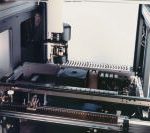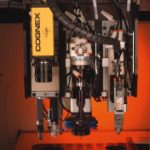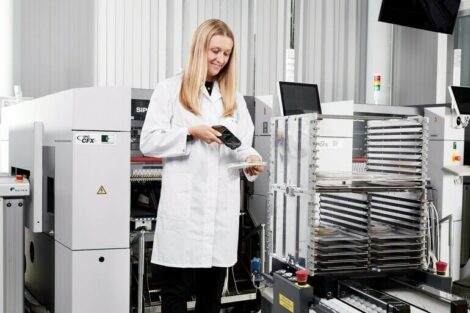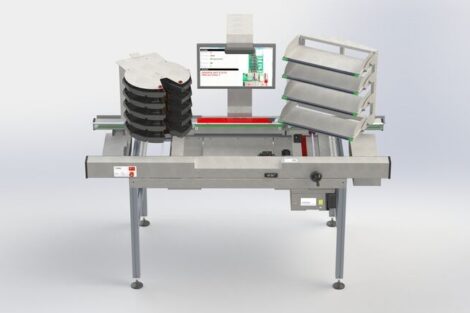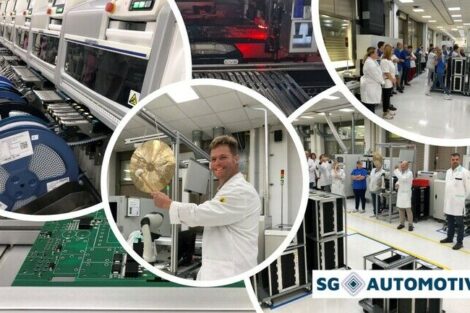Odd-form and final-assembly automation in the board assembly arena is more important than ever. The shifting of production operations to low-cost areas in Asia and Eastern Europe leaves a high demand for end-of-line (EOL) automation in other regions of Europe.
Andreas Holtmann, Universal Instruments
Some years ago, use and application of odd-form equipment was a very critical business. Dedicated machines and inflexible work cells were configured just for one product or a product group. Invariably, it was very difficult and expensive to retool those machines for the assembly of the next board. These systems did not feature a component-vision system, and for most of the individual components a special gripper design was necessary. The lead-time for retooling and the costs, in most cases, spelled the end for this particular piece of manufacturing equipment. For the efficient production environment of today, users need highly reliable, vesatile and cost-efficient machines that give them the same benefits as surface-mount placement and axial/radial insertion machines.
Production engineers need machines that are easy to use and easy to reconfigure. One major key is the software. The comfort and benefits of contemporary SMT-machine software makes it easier and much fast-er to create assembly programson the machines. Package libraries, part number libraries and CAD-data import is a must in any busy production environment. Once a component is set up, the system needs only to download the CAD data from the network to create the next program. To make optimum use of such comfortable features, component vision and servo grippers are essential parts of the machine package. Without the flexibility of servo grippers, CAD-data import is pointless. Only the three-way, highly versatile combination of software, servo grippers and vision systems gives users the ability to create programs on such a machine very fast.
Component feeding is a critical issue
Another very important item is component feeding. The way in which devices are protected and transported is becoming better and better, but a very flexible feeder concept is necessary. The best and most readily available transport shelter for odd-form components is tubes. Horizontal tube feeding has been proven as the most reliable type of component supply. The custom tooling of odd-form feeders should be minimized. The tube length and width should be adjustable at the feeder itself, with only the linear track customised for a specific part. This feeding method is reliable and cost-effective. For axial and radial components, this feeding method is already standard because the components are taped according to EIA standards.
Another critical area is tray feeding. For odd-form parts, no standards like JEDEC or EIA exist. Most trays are designed as transportation package, but they are not suitable for feeding. Some trays are stackable and already suitable for odd form. Some trays are not stable enough and not stackable. Those trays require additional features built into the tray feeder to compensate.
In general, the trays should stay outside the odd-form machine itself. The ideal is where the feeder picks the components from the trays and places them on a linear mechanism. In turn, this transports these singulated parts into the machine and assures an accurate pick-up position. The next step is to use the same piece of equipment in subsequent production stages. And final assembly demands the same flexibility. The soft-ware and the method of retooling should be the same.
Efficiently upgradable in the field
There is no need to return such machines to the manufacturer in order to reconfigure the system. Everything should be done at the customers’ site in a short period of time. It is possible to develop screw-driving modules, dispense heads and gripping modules for final assembly – all directly on user’s shop floor. But this is only relevant if the customer uses the same piece of equipment for different applications. Once a user agrees the pre-acceptance configuration, all modules will be disassembled, shipped to the customer and reinstalled. This delivers the maximum flexibility by eliminating the delays associated with shipping machines to the manufacturer and back to their production facility.
Another important benefit of flexible final-assembly cells is scalability. It is possible to combine different processes at the same time in one machine. This is very useful, especially in the ramp-up period of a product. Then, if the volume ramps up, one or more additional identical cells can be added to the line, and the application-specific modules can be split across them. This is highly cost-effective and reduces the risk of non-productive downtime to the manufacturer. In some areas, it is difficult or almost impossible to forecast the production volume accurately. This flexible concept will only work with modular and intelligent software, along with a versa-tile und modular machine architecture that is open to a wide range of different applications.
As we can see, modern manufacturing equipment offers remarkable advantages and flexi-ble application benefits. Combined with strong user and engineering support, it provides the guarantee for success in a competitive market environment. Cost-sensitive end-of-line automation is necessary to overcome cost pressures in board assembly lines.
ZUSAMMENFASSUNG
Lange Zeit hat man in vielen Elektronikfertigungen die Odd-Form oder Exoten-Bestückung wegen der Vielfalt der Bauformen sowie Einschränkungen bei Losgrößen und Flexibilität manuell vorgenommen. Doch je weiter man in europäischen und anderen hochvolumigen Produktionslinien automatisiert, um so deut-licher wird, daß hier ein noch ungenütztes Potential auf Erschließung wartet. Die End-of-Line- Automatisierung (EOL) an dieser Stelle beeinflußt günstig Qualität und Kosten.
RÉSUMÉ
Très longtemps, dans de nombreuses productions électroniques, l’implantation de composants non standards ou exotiques était réalisée manuellement en raison de la diversité des types et des restrictions liées aux tailles des lots et à la flexibilité. Mais plus on avance dans l’automatisation des lignes de production en fortes quantités européennes et autres, plus il apparaît que le potentiel inexploité est encore important. L’automatisation End-of-Line (EOL) est favorable sur le plan de la qualité et sur celui des coûts.
SOMMARIO
In molte produzioni di componenti elettronici per molto tempo le forme Odd o le connessioni di esotici sono state eseguite manualmente a causa della molteplicità delle forme di costruzione nonché delle restrizioni nelle grandezze delle partite e della flessibilità data. Ma quanto più si ricorre all’automazione nelle linee di produzione europee ed altre di grande volume, tanto più diventa chiaro che quipersiste un grande potenziale di sfruttamento ancora inutilizzato. A questo proposito l’automazione End-of-Line (EOL) influisce favorevolmente sulla qualità e sui costi.
Share:



